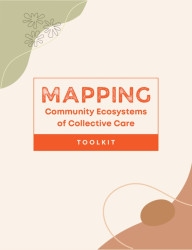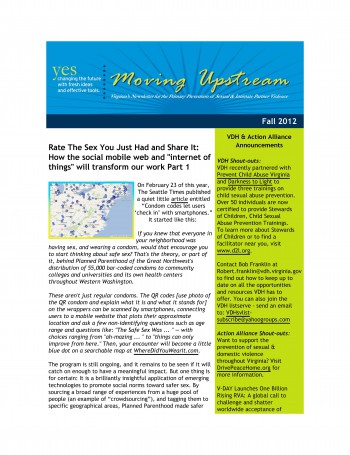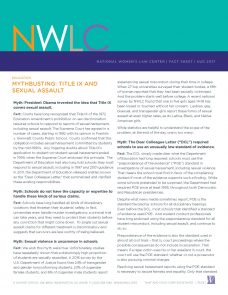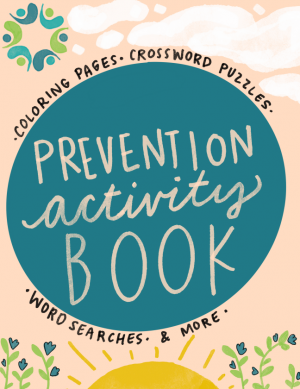Resources Library: Prevention
Start a Search:
Investing in Prevention
The Action Alliance and Virginia's General Assembly are committed to ensuring the expansion of funding for primary prevention of sexual and intimate partner violence to confront and uproot the direct causes of violence. This year, we were successful in establishing $750k in new funding for primary prevention with the hopes of broadening and strengthening prevention work beyond federal funding streams.
On May 18th, the Action Alliance hosted a session on Investing in Prevention via the Directors’ Forum to discuss more about the essential components of primary prevention, how primary prevention complements and connects with intervention services, what the CDC means when it uses terms like “community-level strategies” and “layered approaches”, and more! One of the things we love most about primary prevention work is its hopefulness, inventiveness, and adaptability. If you aren’t already inspired by the world of primary prevention, check out the recording and resources from the forum!
View the May 18th Directors’ Forum Zoom recording (and download the slide deck below)
Access the Jamboard for the “Speedy Town” activity (which includes tips on identifying “downstream” and “upstream” approaches)
“Prevention Toybox” from the Indiana Coalition Against Domestic Violence - a fantastic resource from which we borrowed the Speedy Town activity (with permission)!
Mapping Community Ecosystems of Collective Care

By Shannon Perez-Darby and Andrea J. Ritchie
Since the 2020 Uprisings, there has been an explosion of interest, activity, and organizing around community-based approaches to building safer communities free from the violence of policing. Throughout this period, Interrupting Criminalization has been supporting these efforts by sharing expertise built over decades of organizing for and practicing transformative justice-based approaches to building liberatory communities with resources, toolkits, webinars, podcasts, skill-shares, trainings, cohorts, and learning and practice spaces.
In many of these spaces, and within broader campaigns and movements to divest from policing and invest in the building blocks for safer communities, critical questions and conundrums began to surface from organizers. At the core of these concerns are the questions of:
- How do we build shared definitions, values, and practices of safety across neighborhoods and organizations working within a city?
- How do we weave our small, often relatively new community safety projects — ranging from mutual aid formations, to transformative justice practitioners, to neighborhood defense organizations, to community fridges, to violence interruption and crisis response teams operating at hyper-local levels — into robust, palpable neighborhood and city-wide ecosystems of care that people can feel, trust, and rely on more fully to collectively build greater safety and wellbeing?
- How do we relate to state institutions and resources as we are doing so?
This toolkit offers some resources, responses, and additional questions to consider based on our work and practice spaces.
In particular, this toolkit emerges from the work of our Creating Community Ecosystems of Collective Care Cohort, which launched in March of 2022 and featured over a dozen organizations working in community safety coalitions in Miami, Durham, NC, Seattle, Milwaukee, Phoenix, Minneapolis, and Atlanta. This cohort consisted of groups who were already engaged in this work; it was designed as a virtual space for organizers to learn, practice, and strategize together toward building more robust community ecosystems of care at the neighborhood and city-wide levels.
In addition to breaking isolation, cross-pollinating across communities, and creating a virtual community of practice, the goal was to collectively create resources to support communities beyond the cohort who are grappling with similar questions. This toolkit is that vision come to life.
As communities face increased policing, criminalization, and organized abandonment; mounting state violence, repression, and authoritarianism; escalating white supremacist, homophobic, and transphobic violence; and climate collapse; building skilled, coordinated, expansive, and robust ecosystems of collective care is only becoming more and more essential to collective survival.
Moving Upstream: Newsletter for the Primary Prevention of Sexual and Intimate Partner Violence

An indispensible resource for building capacity for the primary prevention of sexual and intimate partner violence. Each issue features a theoretical article by a sexual violence prevention specialist, a spotlight on promising practices in Virginia, information on events in Virginia relevant to primary sexual violence prevention, and a “Funder’s Forum” section with guest information from the Virginia Department of Health’s Center for Injury and Violence Prevention.
“Moving Upstream” is made possible by Virginia Department of Health and Virginia Sexual & Domestic Violence Action Alliance. Published 3-4 times annually.
National Women’s Law Center - Mythbusting Title IX and Sexual Assault

Nearly one in five undergraduate women experience sexual assault or attempted sexual assault while in college, as do too many men and gender non-conforming students. Title IX of the 1972 Education Amendments requires that schools prevent and respond to reports of sexual harassment, including rape, to ensure survivors can continue to learn in the wake of violence. Despite significant evidence to the contrary, some critics argue that survivors of sexual misconduct on college campuses have too many rights. Myths like these are inconsistent with the law and ignore the real experiences of students subjected to sexual harassment. Below are other myths and facts about sexual assault and Title IX.
Prevention Activity book

The "Prevention Activity Book" is a fun and easy-to-use resource to share with community members and prevention program participants. The 11-page activity book has prevention-themed coloring pages, word jumbles, crosswords, and matching definition games. The activity book will introduce prevention terminology, "moving upstream", joyful sexuality, and the social ecological model. Color your own social ecological model! Solve the joyful sexuality word scramble! This resource was developed and designed by the Action Alliance for the Washington Coalition of Sexual Assault Programs.

